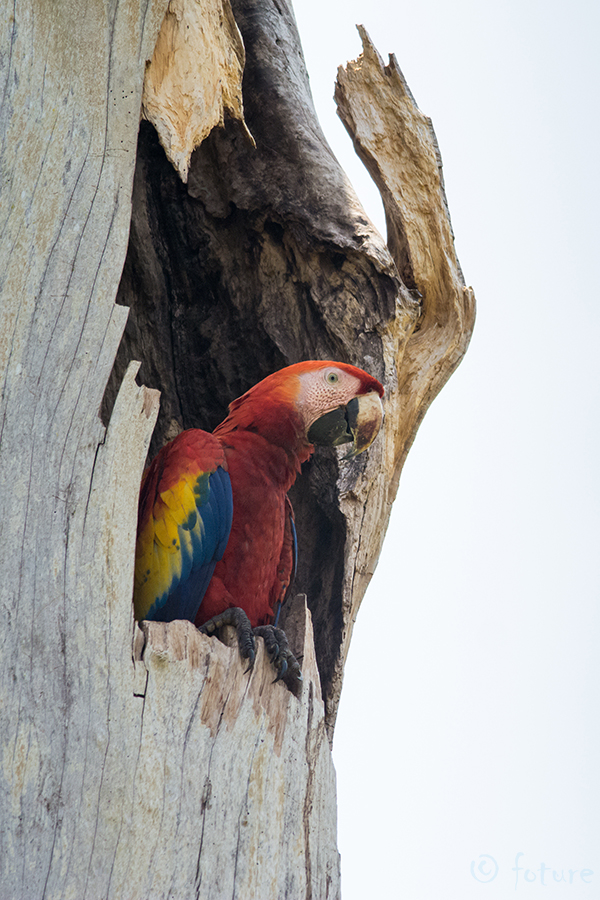
Puna-aara oma koduuksel.
Neid koduuksi on aga Costa Ricas jäänud üsna väheks, mistõttu seda suurt ja kirevat lindu kohtab vaid paaris-kolmes paigas Vaikse ookeani rannikul. Põhiliseks probleemiks on, nagu ikka, elupaikade kadumine. Laiemaks probleemiks on aga papagoide kasutamine kodulindudena - selleks, et keegi saaks endale koju kireva linnu (kes elab kuni 75-aastaseks!), röövitakse metsikute lindude tibusid. Nähes kui väga neile aaradele meeldib lennata, on lindude puuris hoidmine aga sulaselge piinamine.
Scarlet Macaw on its doorstep.
Though there are not many doorsteps left in Costa Rica, therefore you can see that bird in the wild only in 2-3 places on the Pacific Coast. The main problem is the loss of habitat. Broader issue is also the usage of macaws and parrots as domestic pets - for that reason the nests of wild birds are robbed and chicks taken. Seeing how much the macaws (that can live up to 75 years!) love to fly, keeping them in a cage is pure torture.


No kui fotograaf midagi peale passimise ja klõbistamise ei tee, siis võib tukk peale tulla küll. Fotod tehtud Carara rahvuspargis, Costa Ricas.
Well, if the photographer does not do anything besides looking and making some clicking sounds, one might just doze off. The photos are taken in Carara National Park, Costa Rica.

Kommentaare ei ole:
Postita kommentaar